Tracking the spread of coronavirus disinformation
The amount of energy needed to refute the lies and conspiracies is an order of magnitude greater than the energy required to produce it, writes Gregory Green. That’s why it’s so rife
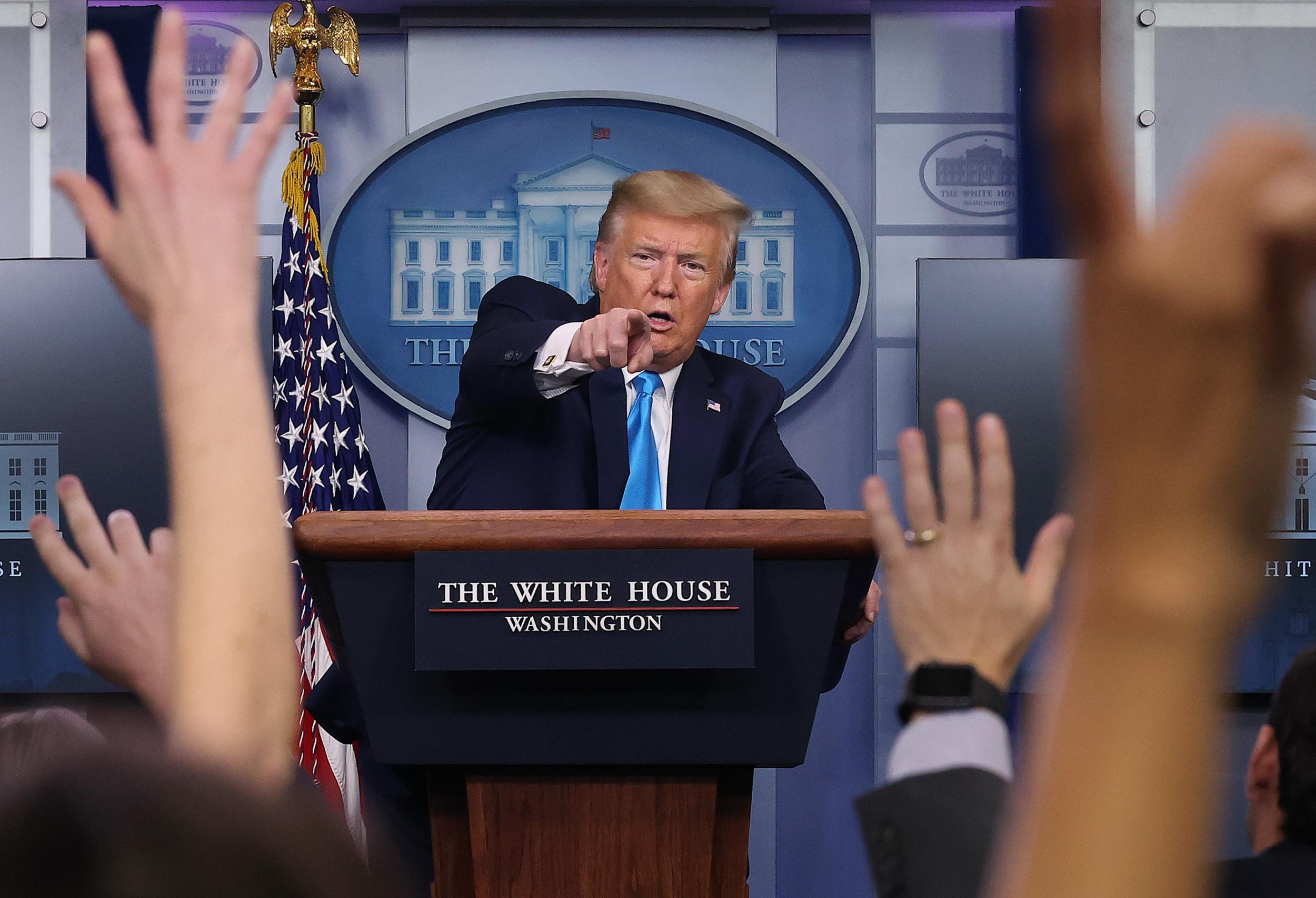
While the speed of the global spread of coronavirus has been dizzying, another and just as surprising element of this pandemic has been the speed with which public narratives around it have evolved. Those narratives have often included disinformation, spread easily by public panic, but sometimes encouraged by normally reputable sources of information. While coronavirus can be spread by droplets and contact with contaminated objects, disinformation has a much faster transmission route – electronic media.
It was in the last days of December 2019 that rumours of a new virus began to spread on Chinese social media. Had Sars – the deadly virus that infected more than 8,000 people by the end of the 2002-03 epidemic and then disappeared without a trace – resurfaced? When the first official statements from the Wuhan Municipal Health Committee and the World Health Organisation (WHO) came out, on 31 December, few in the west took notice. A few flu enthusiasts chattered excitedly on the online FluTrackers forum.
The Avian Flu Diary speculated that the new virus could be a coronavirus, and noted that the upcoming Spring Festival holiday in China – a time when hundreds of millions of people in China travel home to be with family – would be an opportunity for the virus to spread more widely. At the University of Minnesota, the Centre for Infectious Disease Research and Policy noted the outbreak in its news scan. The German virologist Christian Drosten – who in 2003 developed the first diagnostic test for Sars – heard about the outbreak the next day, from a member of his lab who had caught wind of it on Twitter.
But outside this small circle of public health officials, researchers and enthusiasts, the public in the west remained largely oblivious to the virus for another week. It wasn’t until 7 January that The New York Times published its first article on the outbreak, entitled, “China Grapples With Mystery Pneumonia-Like Illness”. But the world was preoccupied. The story about the mystery illness in China did not make the front page, which instead carried the headline, “Khamenei Wants to Put Iran’s Stamp on Reprisal for US Killing of Top General”. How times have changed.
Between late January and early February, the virus entered in earnest into northern Italy. From that moment on, it spread rapidly not only into new population centres, but also into the public consciousness. But even then, it was not until mid-to-late February that it seemed to finally dawn on Americans that the virus was coming for their cities too.
Outpaced by the spread of the virus itself, political partisans struggled to shape the narrative surrounding the pandemic. A new narrative blaming the WHO for the spread of the virus surged into the public consciousness. This narrative was advanced by a vanguard of figures from conservative thinktanks, joined by establishment media, White House officials, and, even, the US president himself. On 7 April, Trump jumped into the fray to launch a broadside against the WHO: “They really called, I would say, every aspect of it wrong.” Trump went further and announced he was considering putting “a very powerful hold” on funding for the WHO. Trump’s attacks on the WHO culminated in his announcement, on 29 May, that the US would pull out of the organisation.
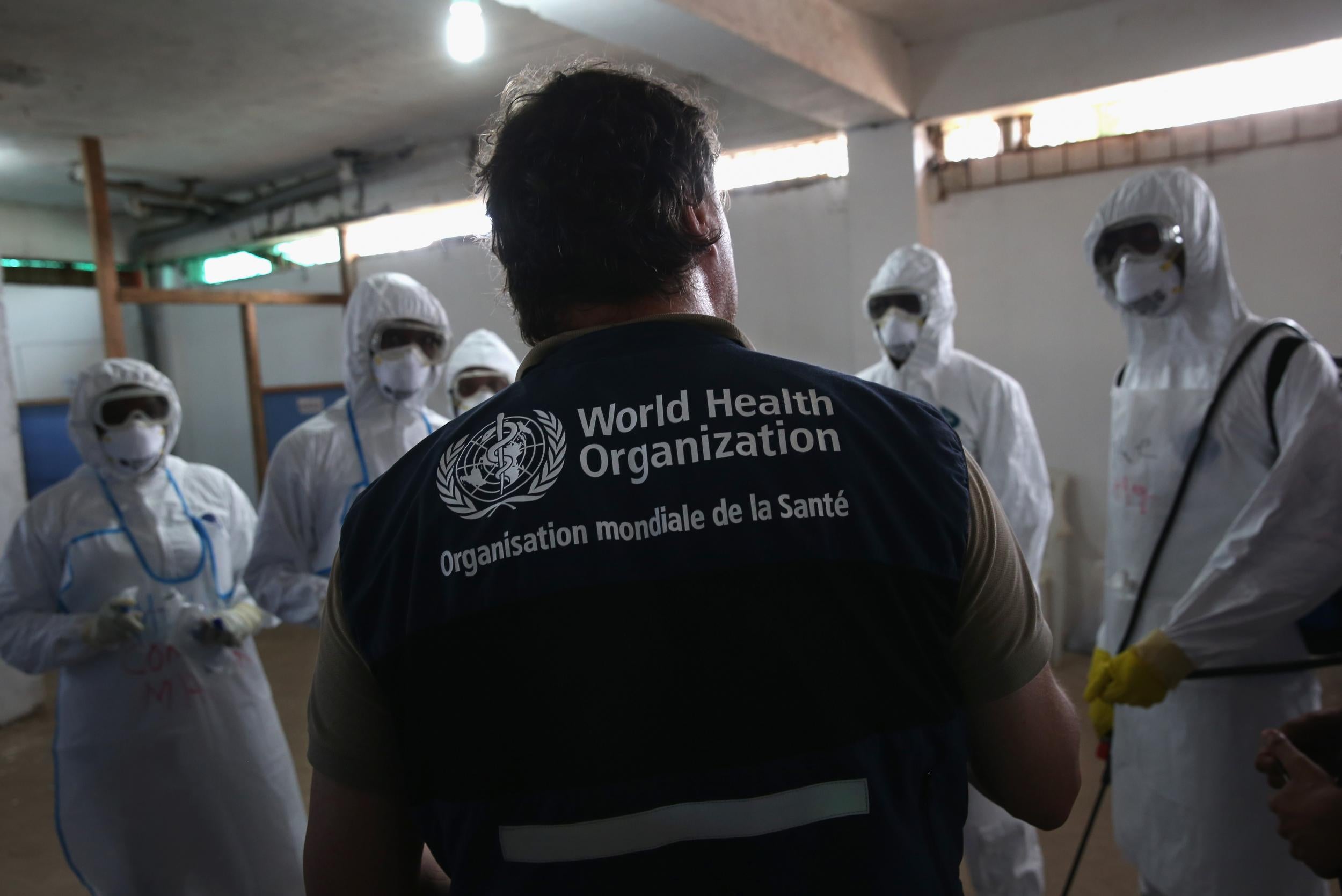
One key element of the developing narrative was that the United States was caught unaware by the new coronavirus. China and its lackeys at the WHO, so the story goes, kept the virus a secret or concealed the severity of the outbreak, until it was too late to avert a major outbreak in America. In this new telling, it was the duplicity of the WHO and China, instead of government inaction in the United States, that allowed the virus to spread. Even more ominously, commentators on the right of American politics suggested that Covid-19 leaked from a Chinese laboratory. But whereas this sort of speculation would normally be confined to the usual corners of the internet, it was now being promoted by a growing number of commentators, government officials, and even respected news outlets.
These narratives follow a common pattern: they are first developed by conservative commentators, are then picked up by the media, and are finally trumpeted by government officials.
On 8 April, the day after Trump threatened to defund the WHO, Rich Lowry published an op-ed in Politico and the National Review defending Trump’s attacks on the WHO and China. Lowry is the editor of the National Review, which styles itself as the thoughtful voice of American conservatism. In his piece, Lowry made a drastic accusation: that the WHO and China deliberately exposed the world to coronavirus. He wrote: “In effect, China and the WHO worked together to expose the rest of the world to the virus, at the same time they downplayed its dangers. One of the worst things China did was seal off Hubei province from the rest of the country while flights continued around the world.”
This is untrue. On 23 January, the day the Chinese government put Wuhan under quarantine, it also shut down Wuhan Tianhe International Airport. This airport remained closed for the following two-and-a-half months, only reopening on 8 April. Lowry’s own publication, the National Review, reported at the time on the cancellation of all fights from Wuhan. The airport closures even trapped American expats in Wuhan, causing the State Department to charter special flights to evacuate US citizens from the city.
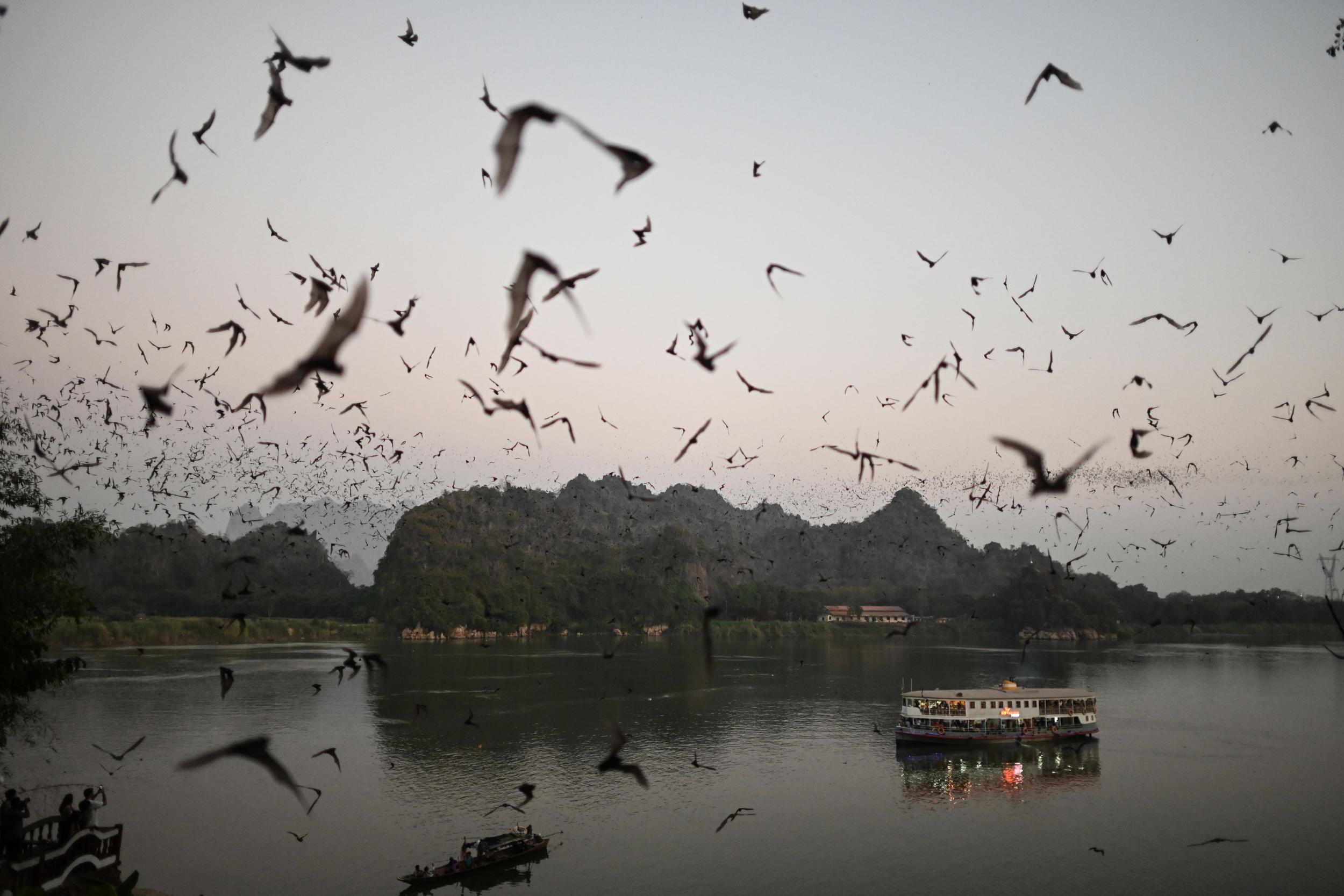
Many countries organised similar evacuations, in some cases encountering serious difficulties. The UK had to delay one evacuation flight due to difficulties in getting Chinese approval, with one of the issues being the Chinese government’s policy that no Chinese national – including dual citizens and family members of foreign nationals – be allowed to leave Wuhan. Even outside of Hubei province, the Chinese government heavily curtailed the ability of Chinese people to travel internationally, banning the purchase of tickets for international flights, the booking of hotels abroad, and overseas tours.
The theory that China continued to allow international flights out of Hubei appears to have been invented by Niall Ferguson, a former professor of history at Oxford and Harvard, and now a senior fellow at the Hoover Institution at Stanford University. In a 6 April column, Ferguson posed a number of rhetorical questions to Chinese president Xi Jinping: “After it became clear that there was a full-blown epidemic spreading from Wuhan to the rest of Hubei province, why did you cut off travel from Hubei to the rest of China – on January 23 – but not from Hubei to the rest of the world?”
These narratives follow a common pattern: they are first developed by conservative commentators, are then picked up by the media, and are finally trumpeted by government officials
Ferguson promoted his theory of targeted infection of the world on Twitter, where it was picked up by another conservative thinktanker, Michael Doran, and re-tweeted by Rich Lowry. From there, the false claim made its way into Lowry’s article. This theory has been making the rounds. Writing in New York Magazine, Andrew Sullivan said: “On January 23, President Xi locked down all air traffic from Wuhan to the rest of China — but, as Niall Ferguson pointed out, not to the rest of the world. It’s as if they said to themselves, ‘Well, we’re going under, so we might as well bring the rest of the world down with us.’ This is not the behaviour of a responsible international state actor.”
President Trump himself has picked up on Ferguson’s theory. At a town hall staged in front of the Lincoln Memorial, Trump mused: “You couldn’t fly out of Wuhan to go to Beijing and or to any place in China… you could fly out of Wuhan, where the primary problem was, to different parts of the world. What’s that all about?”
In an angry speech denouncing China and announcing the US withdrawal from the WHO, Trump again repeated Ferguson’s theory: “Why is it that China shut off infected people from Wuhan to all other parts of China? It went nowhere else. It didn’t go to Beijing; it went nowhere else. But allowed them to freely travel throughout the world, including Europe and the United States. The death and destruction caused by this is incalculable.”
Over the past few years, there has been much concern about the spread of disinformation over social media, but what we are seeing here is something different: the spread of disinformation by well-respected publications. This would not be possible without these publications turning a blind eye. After I corresponded with the editor of Politico about Lowry’s false claim of international flights out of Wuhan, the publication waited a week before issuing a correction. The National Review has not corrected its version of the article.

One important lesson from this crisis is how little the general public knows about such a critical international organisation as the WHO. As a distant bureaucracy, with a name that hints ominously at the spectre of world government, the WHO makes a perfect target for fear-mongering in a time of global panic.
A recurring criticism of the WHO has been its refusal to recommend travel bans. Writing about China’s fictional failure to stop international flights out of Hubei province, Lowry asked: “Was the WHO concerned about that? No, it was fully on board. As a headline in Reuters put it in early February, ‘WHO chief says widespread travel bans not needed to beat China virus’.”
Simultaneously boasting of his own handling of the virus and insinuating the same sort of dark conspiracy between China and the WHO, Trump on 7 April tweeted: “The WHO really blew it. For some reason, funded largely by the United States, yet very China-centric. We will be giving that a good look. Fortunately I rejected their advice on keeping our borders open to China early on. Why did they give us such a faulty recommendation?”
Why did the WHO advise against travel restrictions? Was it because of Chinese influence over the organisation, as many have suggested?

The history of the WHO makes it clear that it has long been sceptical of travel restrictions. During the 2009 swine flu pandemic, which likely originated in Mexico, the WHO stated that there was “no rationale for travel restrictions”. Those who followed the 2014-16 Ebola outbreak in west Africa will recall that at that time, the WHO urged against international travel restrictions. During the 2015-16 Zika outbreak in the Americas, the WHO again advised against travel restrictions.
In 2014, the WHO published a review of the effectiveness of travel restrictions in limiting the spread of the 2009 influenza pandemic, and concluded they had done little to halt the spread of the virus, but that such measures might play some limited role in delaying the arrival of an epidemic. The US Centres for Disease Control’s response plan for pandemic influenza comes to very similar conclusions, and views travel restrictions as a delaying tactic. International travel restrictions that target only particular countries are even less effective, as they do nothing to stop the virus from being imported through a third country. Indeed, the epidemic in New York appears to have been imported from Europe, rather than directly from China. With selective travel bans in place but without the widespread and rigorous testing recommended by the WHO, the virus was able to circulate for weeks in the United States without detection. The virus likely slipped into New York in late January or early February, and while the president continued to boast about shutting off travel from China, an epidemiological time bomb was ticking.
These accusations have now spread, like the epidemic, far beyond the borders of the country in which they originated. The lab-leak theory can be found splashed across the headlines of Le Monde in France and the Corriere della Sera in Italy
There’s another important reason the WHO is wary of travel restrictions. One of the principal objectives of the organisation is to facilitate the sharing of information, allowing countries around the world to respond quickly to emerging threats. If countries that share information about outbreaks within their borders find themselves suddenly cut off from the outside world, they will be more inclined to cover up outbreaks. The outside world might then only learn about outbreaks after they spread beyond the borders of the original country. This is what occurred with Sars in the early 2000s, when fear of the economic consequences of disclosure led the Chinese government to conceal the outbreak for months. The world only learnt about Sars once sick people began showing up abroad. After the 2014 Ebola outbreak in west Africa, the WHO director-general criticised countries’ imposition of travel restrictions, asking: “If countries are punished in this way, where is the incentive for rapid and transparent reporting?”
Without clear evidence that international travel restrictions are effective, the WHO prefers not to urge such restrictions. Instead, it encourages countries to openly share information, and to use extensive testing and contact tracing to contain epidemics. This rationale has driven international health cooperation for decades, and is encoded in the 2005 International Health Regulations, a treaty signed by nearly every country on Earth, which discourages restrictions on travel and trade during epidemics. The United States itself was instrumental in drafting the language about open travel that was adopted as WHO policy.
In the current pandemic, the WHO has again urged against travel restrictions. On 11 February, the body advised that such restrictions could be effective at the beginning of an outbreak, but that they were only a stop-gap measure that might buy time to implement more effective measures, such as testing and contact tracing: “Evidence on travel measures that significantly interfere with international traffic for more than 24 hours shows that such measures may have a public health rationale at the beginning of the containment phase of an outbreak, as they may allow affected countries to implement sustained response measures, and non-affected countries to gain time to initiate and implement effective preparedness measures. Such restrictions, however, need to be short in duration, proportionate to the public health risks, and be reconsidered regularly as the situation evolves.”
The WHO recommended that travel restrictions only be used to buy time to implement widespread testing and aggressive contact-tracing. “Countries should be prepared for containment, including active surveillance, early detection, isolation and case management, contact tracing and prevention of onward spread of 2019-nCoV infection.”

If more countries had heeded this early advice from the WHO, they might have contained the first seeds of the pandemic, which were just then being planted around the world.
At this early point, the National Review was sounding a very different tone. In late January, the magazine warned of the threat posed by the virus. In an article on 5 February, Marc Siegel argued that travel bans would be of limited effectiveness, using similar reasoning as that of the WHO. As the epidemic spread in the United States, Lowry himself advised Trump against downplaying its seriousness. This advice fell on deaf ears, and by mid-March, it became increasingly clear that the virus would have a devastating impact on the United States. Faced with this reality, the conservative establishment pivoted into damage-control mode.
Lowry has since attached himself to Trump’s various efforts to deflect blame for the mishandling of the epidemic, defending administration officials who labelled it the “Wuhan flu” and now, defending Trump’s attacks on the WHO. This has become the new line of attack for the president and his allies: an aggressive media campaign to shift attention from Trump’s own misdoings, and onto the WHO and China. With the leak of a Republican memo that advises candidates “don’t defend Trump, other than the China travel ban – attack China”, this strategy is now out in the open.
Yet even if one ignores the motivations for these deflections, and even if one forgives the willingness of Ferguson, Doran, Lowry and Sullivan to invent “alternative facts” to bolster their argument, the narrative falls apart under even the weakest of scrutiny. Lowry puts the new narrative succinctly: “Without China’s deceit and WHO’s solicitude for Beijing, the outbreak might have been more limited, and the world at the very least would have had more time to react to the virus.”

This narrative requires us all to forget the month of January. Any illusions that anyone held about the new virus not being a serious issue should have been shattered on 23 January when the Chinese government took drastic, highly publicised actions to halt the spread of the new virus. In what was the largest medical quarantine in history, the city of Wuhan, containing 11 million people, was cut off from the outside world. All buses, trains and flights in and out of Wuhan were cancelled, and highways leading in and out of the city were blocked. Over the following days, measures were tightened, with residents ordered to stay in their homes and moderately ill patients sent to quarantine centres.
The quarantine was quickly extended to cover most residents of Hubei province, comprising nearly 60 million people – the equivalent of the states of California and New York combined. Across the rest of China, metropolises such as Beijing, Guangzhou, Shanghai, Tianjin and Shenzhen went into partial lockdown, severely restricting movement and public life. Cities instituted temperature checks in public spaces, restricted access in apartment blocks to residents, and put anyone who had recently been to Hubei province under quarantine. The Spring Festival holiday was extended into February, and in many provinces by another week, leading Bloomberg to declare, “At Least Two-Thirds of China Economy to Stay Shut Next Week”. By mid-February, The New York Times estimated that two-thirds of China’s massive migrant labour workforce was unable to return to the cities to work. The Chinese economy suffered its first quarterly contraction since the end of the Cultural Revolution in 1976. The world looked on as the second largest economy on Earth shut itself down.
The reaction in the western press was one of shock, with many calling China’s extreme measures a Draconian overreaction. “China’s attempt to curb a viral outbreak is a radical experiment in authoritarian medicine,” The Atlantic declared. “Scale of China’s Wuhan Shutdown Is Believed to Be Without Precedent,” read The New York Times headline. Nobody who read the news in late January could conclude that China was not taking the virus seriously. This played out nearly two months before Trump showed any sign of acknowledging the seriousness of the new virus.
A side-by-side comparison of statements made by the WHO and Trump as the pandemic unfolded also exposes the absurdity of the narrative that the WHO hid the seriousness of Covid-19 from Trump. On 30 January, the WHO officially declared the novel coronavirus to be a Public Health Emergency of International Concern, calling on member states to act quickly to contain the epidemic. The WHO stated its belief that “it is still possible to interrupt virus spread, provided that countries put in place strong measures”. On the same day, Trump tweeted: “Working closely with China and others on Coronavirus outbreak. Only five people in US, all in good recovery.”
On 21 February, the WHO said that the world had reached a “tipping point”, and that the “window of opportunity is narrowing, so we need to act quickly before it closes completely”. For reference, this was the same day that Italy locked down several towns in Lombardy – the first significant restrictions in Europe. On 24 February, the WHO called on countries to “prepare for a potential pandemic”, and warned that countries were insufficiently prepared. On the same day as the WHO issued this warning, Trump tweeted: “The coronavirus is very much under control in the USA. We are in contact with everyone and all relevant countries. CDC and World Health have been working hard and very smart. Stock Market starting to look very good to me!”
In the weeks after these statements, Trump continued to downplay the spread of the virus in the US. He frequently touted his decision to ban travellers from China, claiming that this had spared the US a larger outbreak. On 9 March, the day that the Italian government put the entire country under lockdown, Trump compared Covid-19 to the seasonal flu. “So last year 37,000 Americans died from the common flu. It averages between 27,000 and 70,000 per year. Nothing is shut down, life and the economy go on. At this moment there are 546 confirmed cases of coronavirus, with 22 deaths. Think about that!”
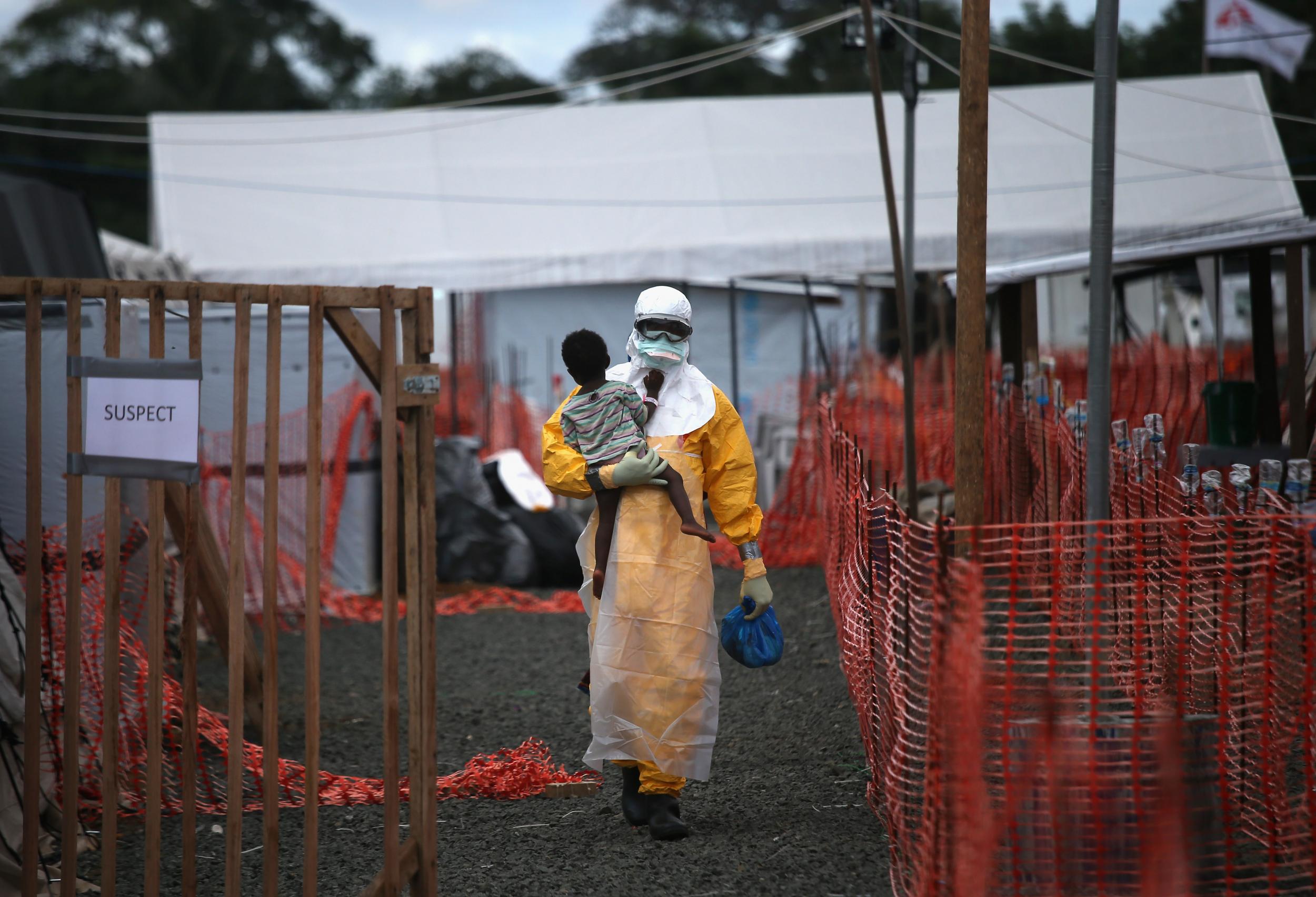
But it is not only the WHO’s warnings that Trump ignored. An NYT exposé detailed how the Trump administration resisted warnings from multiple levels of government, including from his own advisors and from the National Security Council, throughout January, February and into March.
Ultimately, China and the WHO are not responsible for the United States’ failure to ramp up testing as the virus spread undetected. In fact, the WHO repeatedly warned that travel restrictions – Trump’s favourite measure – could only serve as a stop-gap while testing capabilities were brought online – something Trump neglected. China did not force Trump to downplay the virus for months, nor did it induce him to claim that “one day, it’s like a miracle, it will disappear”.
These transparent deflections are especially damaging because they attack the organisation that coordinates international health efforts. More than ever, the world is realising the necessity of international cooperation in fighting epidemic disease. Thanks to the WHO, the world knew of the outbreak in Wuhan within days of its detection. But now at this crucial time, Trump is willing to shatter international cooperation in order to shore up his domestic political position. Lending a hand, Lowry, Ferguson and a coterie of like-minded thinktankers and media figures concoct untruths to bolster the argument. The stakes are bigger than election-day politics: if they manage to discredit the WHO in their attempt to cover up for Trump’s inaction, the world will truly be in the dark when the next pandemic rolls around.
The story of Wuhan’s flights shows how “truth” is fabricated out of nothing – how rumours found on Twitter are translated into accepted fact through publication in major news outlets. This raises the question: where are thinktank heavyweights and senior reporters of outlets like the National Review getting their information?
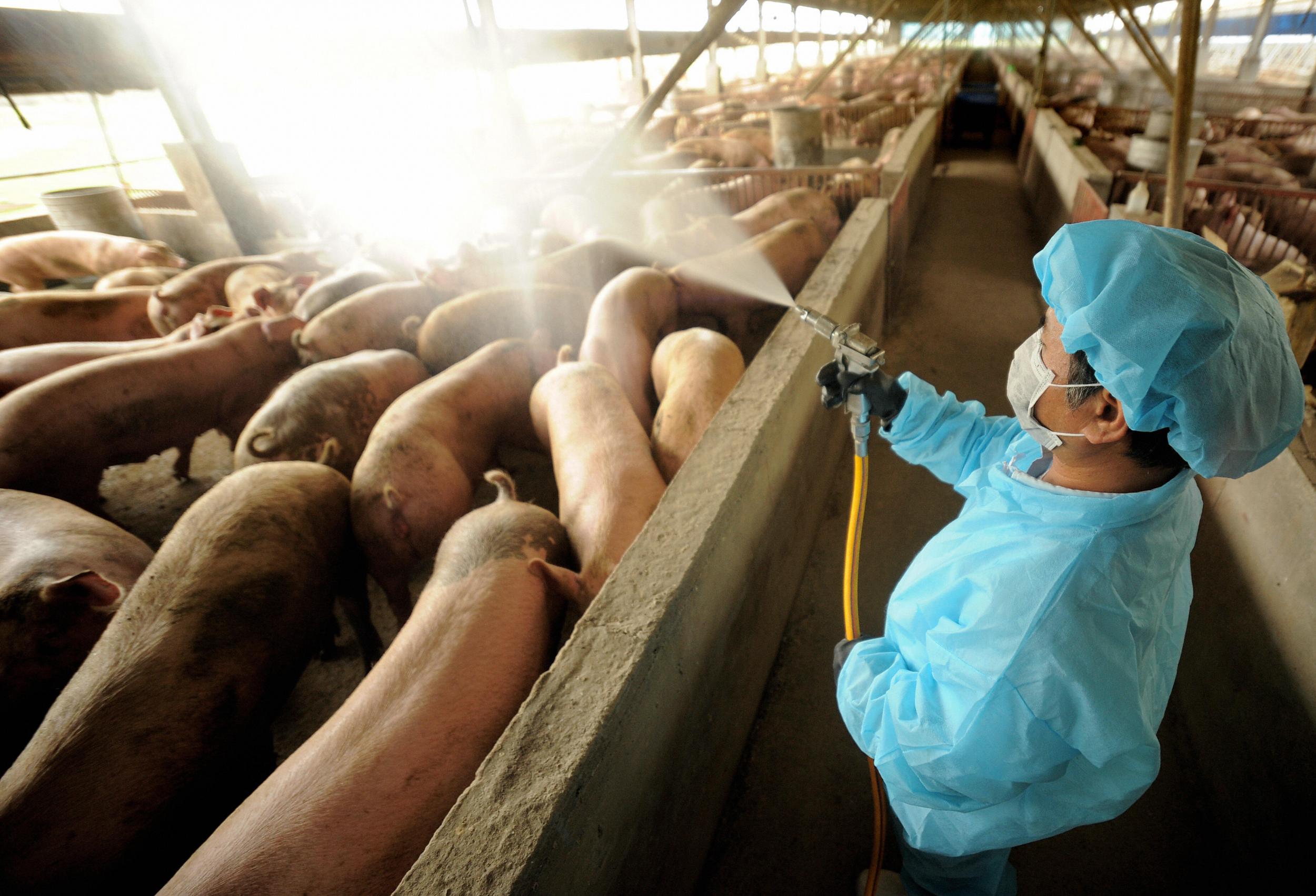
Jim Geraghty is the magazine’s senior political correspondent. A brief review of the sources which underlie his reporting is instructive. On 3 April, Geraghty published a long investigation into the origins of the coronavirus, which he suggests comes from a lab in Wuhan. The sourcing for this claim? A YouTube personality called “C-Milk”, who taught English in China for 10 years.
When C-Milk is not investigating Chinese biosafety labs, he makes videos with titles such as, “What’s Cool in China? Sexy, Long Legs”, “Do Chinese Girls Like Foreign Guys?” C-Milk is also known for hits such as “Top 5 Things Chinese Girls LOVE!”, “Chinese Girl Tries American Chinese Food” and “Would You Be Considered ATTRACTIVE in China?” Since moving back to the US in late 2019, C-Milk has transitioned into a new genre of video, which can be summarised with a few recent titles: “China’s Coronavirus is Much Worse Than You Think”, “How China Destroyed Me…”, “China Fails Where the USA Succeeds”.
Geraghty’s article is based on C-Milk’s foray into investigative journalism: “I Found The Source of the Coronavirus”. Geraghty credulously details every piece of “evidence” uncovered by C-Milk, each seemingly more absurd than the last. After poring through the rumour mill of Chinese social media and internet forums, C-Milk believes that he has identified “patient zero”, the first person to be infected with Covid-19: a graduate student who left the Wuhan Institute of Virology (WIV) in 2015. His evidence? Her picture is missing from the WIV’s website.
Geraghty wonders aloud why the Chinese government has not produced a video of her. He speculates that the outbreak may have begun with improper cremation of the hapless graduate student. Never mind that the graduate student in question has not published a paper at the WIV since her graduation in 2015. That in itself is very strong evidence that she left the institute after graduation. But more importantly, there’s simply no evidence at all that she – out of the 1.4 billion people in China – is patient zero. This lack of evidence didn’t prevent Forbes from promoting the “patient zero” theory, and despite non-existent sourcing, nor the UK government from floating the lab-leak theory to the Daily Mail.
Geraghty passes on another of C-Milk’s pieces of “evidence”. In November and December of last year, the WIV posted two job advertisements. C-Milk finds the timing of the postings suspicious, saying: “We’ve discovered a new and terrible virus, and would like to recruit people to come deal with it.” Yet a look at the text of the advertisements shows that they say nothing of the sort. They note that in recent history, a number of bat coronaviruses have gone on to infect humans and livestock, with Sars being the most significant example.
The advertisements further explain that the WIV studies various aspects of bat coronaviruses. Being unfamiliar with Sars, Mers and the large family of bat coronaviruses that have been discovered in the past decade, Geraghty and C-Milk misunderstand the WIV job postings to mean that the institute has just discovered a deadly new virus that they need help containing. The timing of the job postings is also unsurprising. November and December lie squarely in the middle of the academic hiring season, when universities and research institutes the world over post advertisements for jobs beginning the following fall. In an illustration of how conspiracy theories bound back and forth between the respectable media and social media, C-Milk repeats Lowry’s claims about international flights from Wuhan in a follow-up video to his “investigation”. From a Tweet, to Politico, to YouTube, and then into our Facebook feeds. Rumour has become truth.
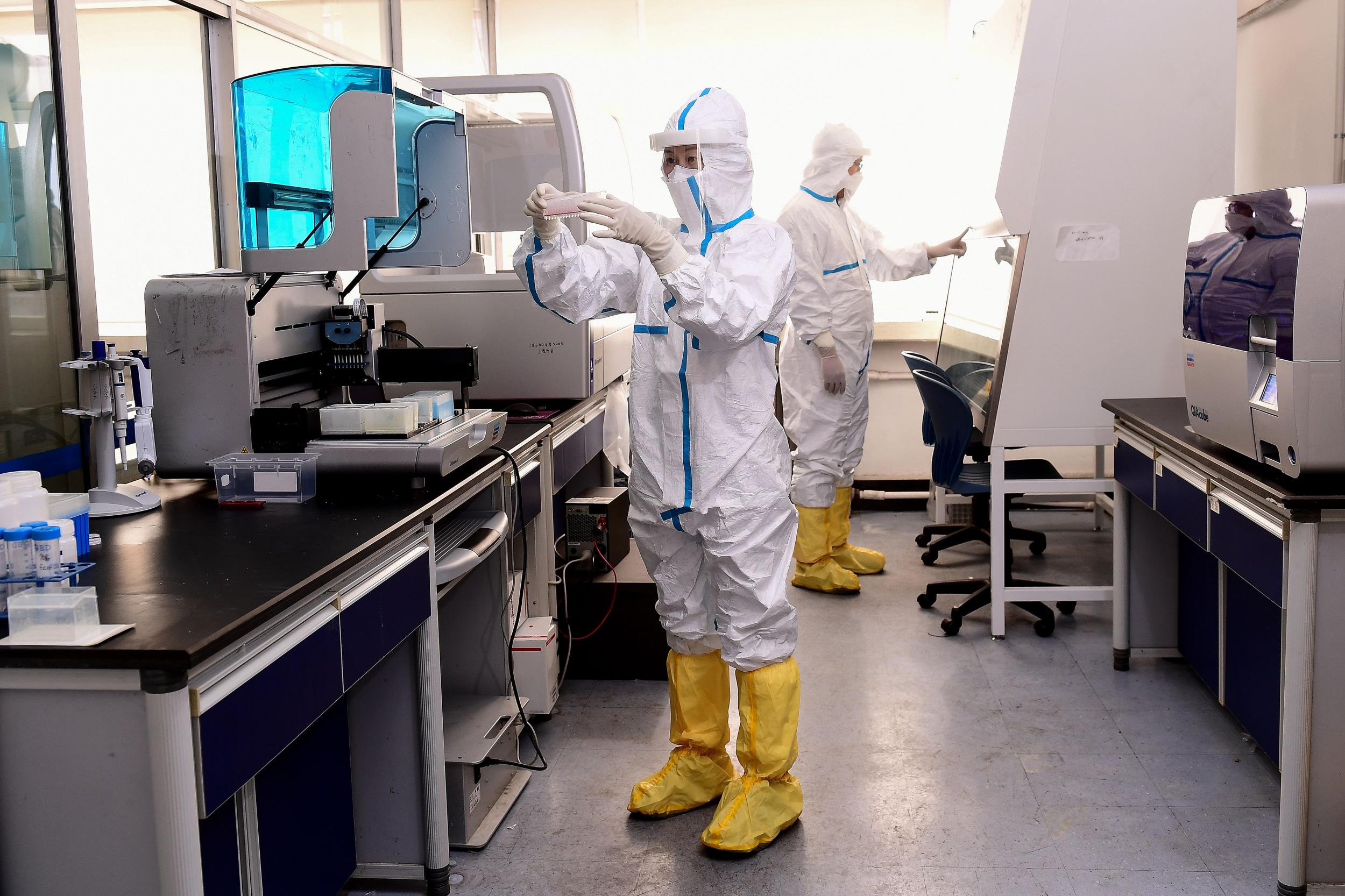
With such an important topic as the origin of a global pandemic, one would think that the senior political correspondent for the National Review would rely on the work of experts, but he is happy to inform the reader that C-Milk’s information “checks out”. For YouTube clickbait to be passed off as serious research into the origin of Covid-19 takes more than incompetence. One is reminded of the role that the Iraqi informant “Curveball” played in the run-up to the Iraq War. American intelligence knew full well that Curveball was an alcoholic with a reputation among his friends for dishonesty, but he told intelligence agents what they wanted to hear: that Saddam Hussein had mobile biological weapons laboratories. Geraghty and the National Review aren’t concerned that they’re recycling rumours from a YouTube personality better known for his advice about dating in China, who himself picked up those rumours on Chinese social media. The rumours “check out” – that is, they serve a political purpose.
Geraghty doesn’t only turn to YouTube clickbait to source his theories. A week after his article on C-Milk’s theories, he cited an essay by Matt Ridley, published in The Wall Street Journal, which claims that even before the outbreak, “the virus that causes Covid-19” was stored away in the WIV. Ridley identifies this virus as “RaTG13”. Geraghty leapt on this WSJ essay as support for the lab-leak theory. After all, if the WIV had the virus that causes Covid-19 sitting on its shelf, then couldn’t it have leaked? The only problem with this theory is that RaTG13 is not that virus, and there’s no evidence that Sars-CoV-2 was sitting on a shelf in the WIV. RaTG13 is indeed the name of a Sars-like coronavirus discovered by researchers from the WIV, but it is not the virus that causes Covid-19. It is the closest known relative of Sars-CoV-2, but preliminary genetic analysis suggests that it is nevertheless separated by decades of evolutionary history – a sibling, rather than a parent. Nonetheless, as a scientifically uninformed (but politically motivated) commentator, Geraghty passes off Ridley’s error as evidence.
Geraghty further indulged the lab-leak theory on 9 April, but this time was too shy to put his own name to his wild speculation: “Some will argue this points in the direction of a lab accident theory, as who knows what kind of material comes out of the sewer lines of the Wuhan Institute of Virology or Wuhan Centres for Disease Control, and whether someone could have used waste material that was carrying Sars-CoV-2 to create their ‘gutter oil’.”
Some will argue that the senior political editor at the National Review is playing connect-the-dots between miscellaneous Chinese scandals in order to make political hay out of a pandemic. Who knows what sort of garbage from the internet will flow into the magazine’s next headline?
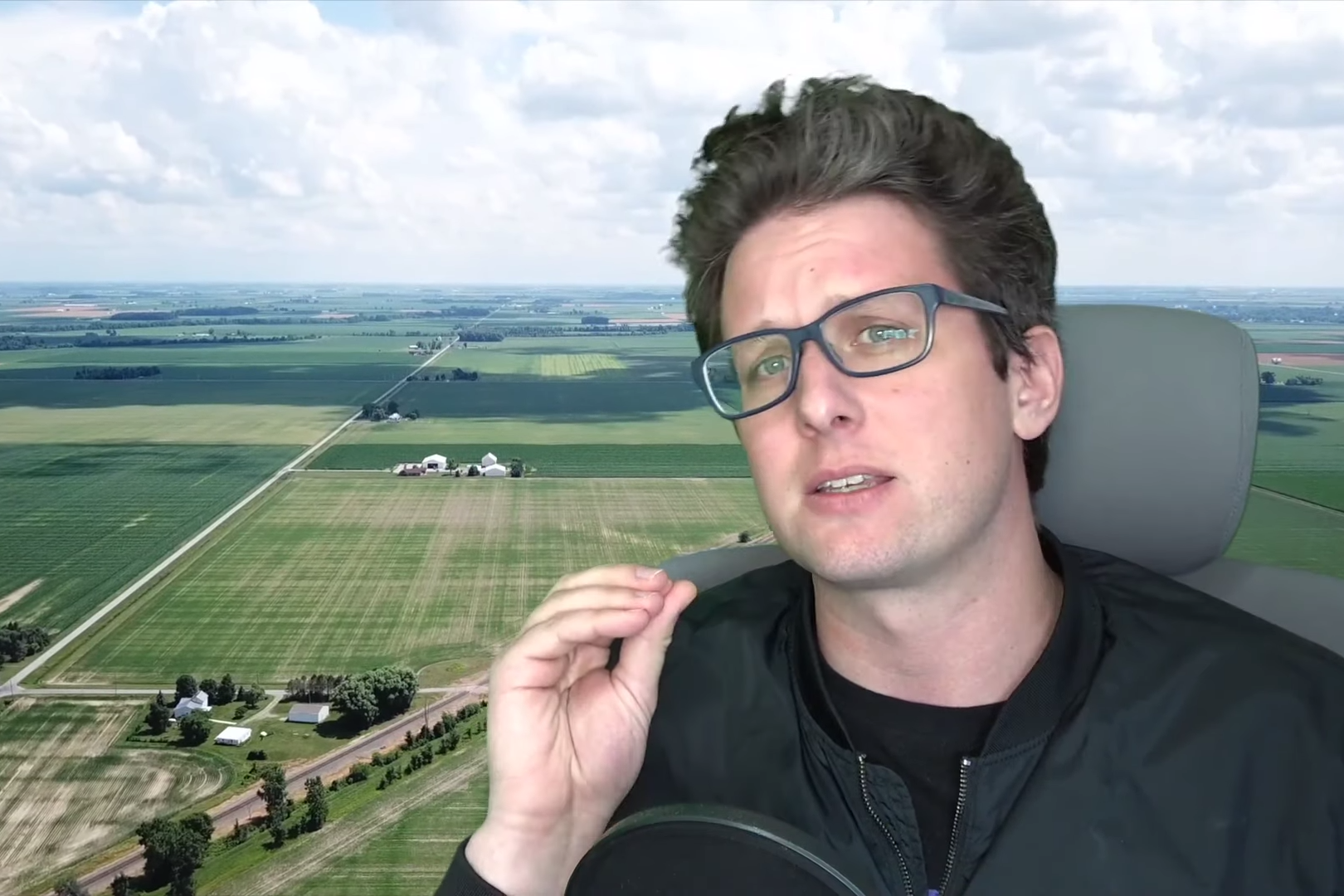
Prominent American political figures have increasingly pushed the lab-leak theory. US senator Tom Cotton (Republican, Arkansas) was an early promoter of the theory that Covid-19 leaked out of a Chinese lab, both in the Senate and on Fox News. However, the Trump administration has also started promoting this theory more heavily through multiple channels.
In a strange political realignment, The Washington Post, has played a prominent role in giving the Trump administration’s conspiracy theory about the Wuhan lab an air of respectability. On 2 April, The Post published an opinion piece by David Ignatius that lent credence to the theory, even while admitting that there was no evidence to support it. In an opinion piece published in the paper on 14 April, Josh Rogin promoted the theory about the WIV, citing newly “leaked” US diplomatic cables – documents no doubt passed to him by the Trump administration.
The story of Wuhan’s flights shows how ‘truth’ is fabricated out of nothing – how rumours found on Twitter are translated into accepted fact through publication in major news outlets
The cables report on a visit by US diplomats to the WIV that occurred before the opening of the institute’s new high-security lab. Rogin cites a short passage in which the Chinese scientists hosting the American delegation state that they require additional trained staff to operate the new lab. Rogin also notes that the cable requests that the US government increase its support for the Chinese lab, some of whose staff are trained at a US national lab. Rogin argues this request reflected “grave concern” about the safety of the lab. As Rogin refused to publish the full text of the cables, his characterisation was impossible to verify. Rogin repeatedly refers to Professor Xiao Qiang of UC Berkeley to confirm the plausibility of the idea that the virus escaped from the lab. Yet Xiao Qiang is a professor of communication, and has no apparent expertise or experience with biological research. He has, however, served in senior roles in US-government-funded “pro-democracy” NGOs focusing on China.
Rogin’s opinion piece led to a surge of interest in the theory of a lab leak. Niall Ferguson promoted Rogin’s article on Twitter, writing that “the Chinese government needs to come clean about what exactly was going on” at the WIV. Carelessly flitting from one conspiracy theory to the next, Ferguson has since grudgingly admitted that he might be incorrect about flights out of Wuhan, and has pivoted to claiming that Sars-CoV-2 leaked from the WIV. Ironically, on 19 March, Rogin wrote an article criticising Chinese officials for suggesting that the virus originated in the US: “Chinese officials are intentionally spreading the lie the virus may have originated in the United States to deflect blame from their own early failings.”
Change “Chinese” to “American” and “United States” to “a Chinese lab”, and you have a perfect summary of Rogin’s 14 April opinion piece.
On 15 April, Fox News ran an article that cited unnamed officials in the US government who suggested the virus leaked out of the WIV. Incredibly, the article admitted that Fox News had not itself seen the underlying evidence. Fox News then promoted this story at Trump’s press conference on the same day, asking him to comment on it. Appearing to have anticipated the question, Trump indulged the theory, saying his government was looking into the issue carefully. One aspect of Fox News’ theory – that an infected intern spread the virus – appears to be lifted from C-Milk. Indeed, The Daily Telegraph of Sydney has since published details from a supposed intelligence dossier, which also includes the theory about an infected intern. Predictably, Ferguson promoted The Daily Telegraph’s article on Twitter, before walking back his endorsement after doubt was cast on the origin of the dossier.
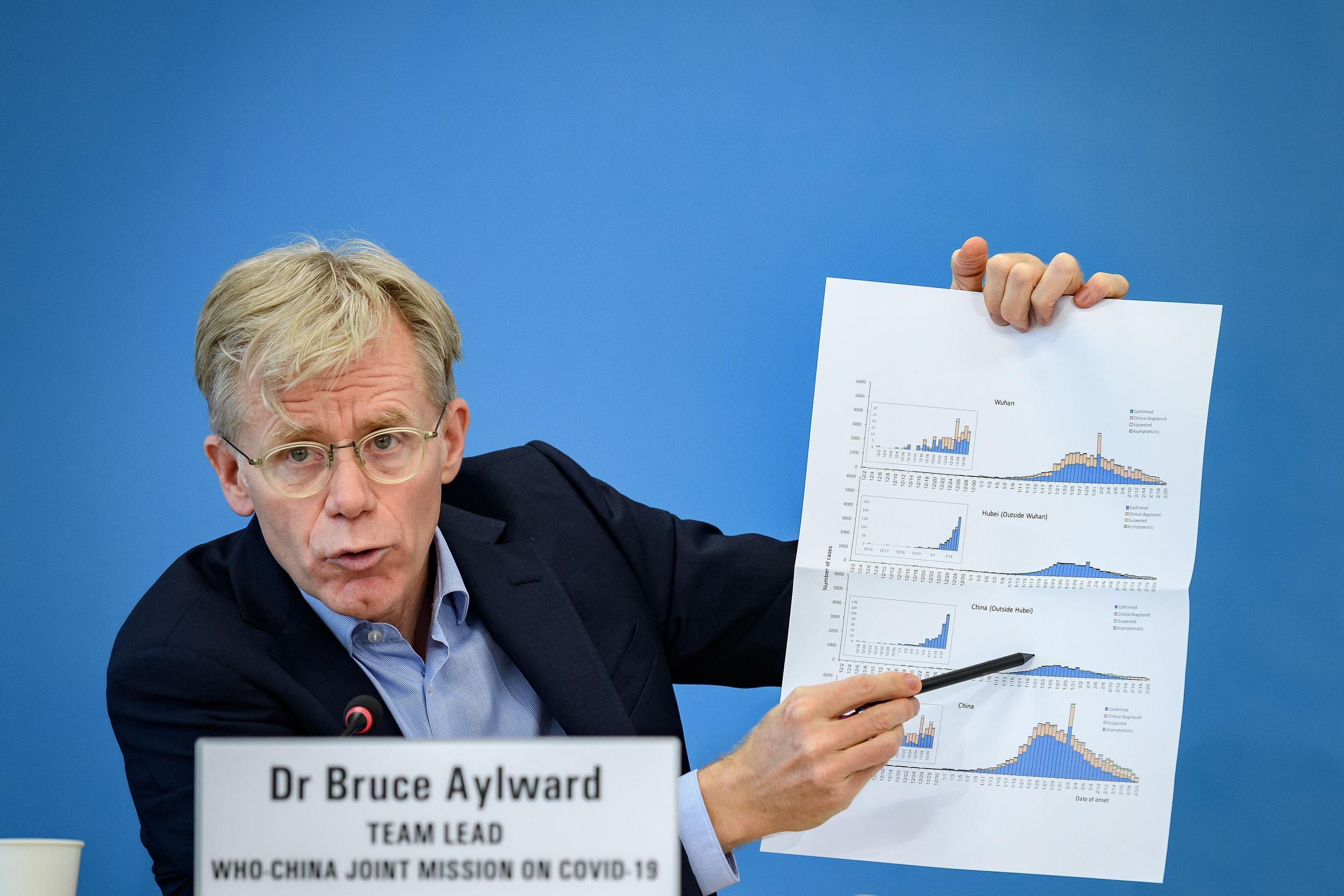
Asked about the source of the dossier, Australian intelligence officials told the Sydney Morning Herald and The Guardian that the document contains no information gathered by intelligence services, and is instead based on publicly available material, and was likely leaked by the US embassy in Canberra. The author is unknown. Perhaps they too have watched C-Milk’s videos. This pattern of promotion of questionable “intelligence” has precedent. In a pattern reminiscent of the leadup to the Iraq War, The New York Times has reported that the Trump administration is pressuring intelligence agencies to find evidence to support the administration’s preferred theory of a lab leak.
On the same day that Fox News asked Trump about the WIV, secretary of state (and former CIA director) Mike Pompeo gave an interview on Fox News in which he echoed Ferguson’s demand that China “come clean”. Pompeo has been at the forefront of efforts to divert attention away from the Trump administration’s response to the virus, insisting on referring to Sars-CoV-2 as the “Wuhan virus”, and in March even torpedoing a G7 joint statement by insisting that it use the term. More recently, Pompeo has claimed that there is “enormous evidence” that Sars-CoV-2 leaked from the WIV, though he has not presented any of this evidence. Peter Navarro, Trump’s trade advisor, a long-time China hawk and author of the book Death by China, has demanded that China positively prove that the outbreak did not begin at the WIV, and has repeatedly asserted the existence of a sinister plot by the WHO and China to hide the virus and allow China to corner the market on face masks. Trump himself has increasingly boosted the theory of a lab leak, telling assembled media on 30 April that he had seen evidence for the theory. Asked about the nature of this evidence, he responded: “I can’t tell you that. I’m not allowed to tell you that.”
These accusations have now spread, like the epidemic, far beyond the borders of the country in which they originated. The lab-leak theory can be found splashed across the headlines of Le Monde in France and the Corriere della Sera in Italy. Even Germany’s normally subdued public broadcasters have indulged the theory. Borrowing a phrase from Steve Bannon, Trump’s 2016 campaign manager, the German ZDF called the pandemic a “virus Chernobyl” during a segment in which the host uncritically repeated the Trump administration’s talking points about the WHO and the lab-leak theory.
The central problem with these accusations, besides the complete lack of evidence for them and the bad faith with which they are made, is that the chances of accidental release of a new virus from a high-security laboratory are small, compared to the chance of infection of a human by an animal at a market or in the countryside. Throughout history, pandemics have repeatedly been caused by viruses that jumped from animals to humans, a process known as zoonosis. HIV is believed to have spread from non-human primates to humans sometime in the 1920s. Research conducted by the WIV has shown that the Sars coronavirus, which is related to Sars-CoV-2, originated in bats. The deadly Mers coronavirus is also descended from a bat coronavirus, but now circulates in camels and has repeatedly made the jump to humans, infecting more than 2,000 people since its discovery in 2012. The H1N1 swine flu circulated first in pigs, and likely made the jump to humans at a farm somewhere in Mexico, going on to cause a global pandemic in 2009-10.

Indeed, research conducted at the WIV has shown that in Yunnan province in China villagers who live near bat caves are occasionally infected with novel coronaviruses. A study co-authored by American and Chinese researchers found that in one village, 2.7 per cent of people living in close proximity to bat populations had antibodies in their blood suggestive of recent infection with a Sars-like bat coronavirus. With large numbers of people living in close proximity to animals that carry Sars-like coronaviruses, it was only a matter of time before one made the jump to humans and caused an epidemic. In 2013, Peter Daszak, a US-based researcher who has published several studies together with researchers from the WIV, discussed findings that bats in Yunnan province harbour Sars-like coronaviruses: “Right now in China, there are bats carrying a virus that can directly infect people, and cause another Sars pandemic.”
As researchers have studied bat populations in southeast Asia, they have discovered a large array of Sars-like coronaviruses, several of which may be able to make the jump to humans. As a paper in the prestigious Proceedings of the National Academy of Sciences journal warned in 2016, “Sars-like WIV1-CoV poised for human emergence”. Although the particular virus the researchers singled out did not end up causing the current pandemic, the virus lies within the same family as Sars-CoV and Sars-CoV-2. While C-Milk, Lowry, Cotton, Pompeo and Ferguson worry about researchers at the WIV in full protective gear carrying test tubes, countless farmers, butchers and shoppers are coming into daily contact with infected animals, unshielded by any sort of medical protection.
This is the reason why China established a state-of-the-art laboratory at the WIV. After the outbreak of Sars in China in 2002, there was great interest in studying coronaviruses that originate in bats. The Chinese and French governments signed an agreement under which France provided technical assistance in building a “biosafety level 4” laboratory, or “BSL-4”. Such laboratories operate under the strictest set of biological containment precautions. Much of the scientific staff of the WIV is trained at the Jean Mérieux-Inserm Laboratory in Lyon, at the Galveston National Laboratory at the University of Texas, and at the Australian Animal Health Laboratory in Victoria – all BSL-4 labs. The BSL-4 lab at the WIV took more than 10 years to build and certify, and since its opening in 2018 has become one of the world’s leading institutes for studying Sars-like coronaviruses.
Far from being “secretive”, as Senator Cotton has described it, the WIV has conducted research into Sars-like coronaviruses together with international scientists, including some funded by the US National Institutes of Health. When Geraghty asks, “who knows what kind of material comes out of the sewer lines of the Wuhan Institute of Virology”, the answer is that many scientists and engineers in France, the US and Australia who have worked closely with the WIV must know. Instead of surfing YouTube, Geraghty should have asked them.
Scientific collaboration between US scientists and the WIV has already fallen victim to the conspiracy theories promoted by Geraghty, The Washington Post, Fox News and others. Asked on 17 April about NIH funding for Daszak’s coronavirus research in China, Trump responded: “We will end that grant very quickly.” In the following days, the NIH wrote to Daszak, referencing the conspiracy theories swirling around the WIV, and, without a hint of irony, informing Daszak that his research into the origins of bat coronaviruses does not “align with the program goals and agency priorities”. In response, 77 American Nobel Laureates have written an open letter expressing grave concern over the politicisation of funding for science.
The new narratives being spun around Covid-19 illustrate the bullshit asymmetry principle: the amount of energy needed to refute bullshit is an order of magnitude greater than the energy required to produce it. Some of the claims being propagated by Lowry, Ferguson and their peers are easy to refute. China and the WHO did not try to infect the world by allowing international flights out of Wuhan, despite the claims made in publications such as Politico and New York Magazine. Claims that the WHO or China prevented the US from reacting to the virus quickly can be dispelled by simply comparing the timeline of the WHO’s warnings and China’s drastic lockdowns with a timeline of Trump’s tweets.
Other claims, though completely lacking evidence, are nearly impossible to refute. It is vastly more likely that Covid-19 emerged through zoonosis far outside any lab, in one of the many encounters that humans regularly have with infected animals, rather than escaping from a highly secure research lab. Yet by pointing to the theoretical possibility of a lab escape, Trump and his political allies can distract from their own calamitous response to this pandemic. Much as in the leadup to the Iraq War, these claims rest on extremely weak evidence, but serve a political purpose. And just as then, some nominally respectable publications – not just the usual suspects at Fox News but also The Washington Post, New York Magazine, Le Monde and others – are willing to promote poorly sourced theories, as long as they “check out” politically.
Join our commenting forum
Join thought-provoking conversations, follow other Independent readers and see their replies
Comments
Bookmark popover
Removed from bookmarks